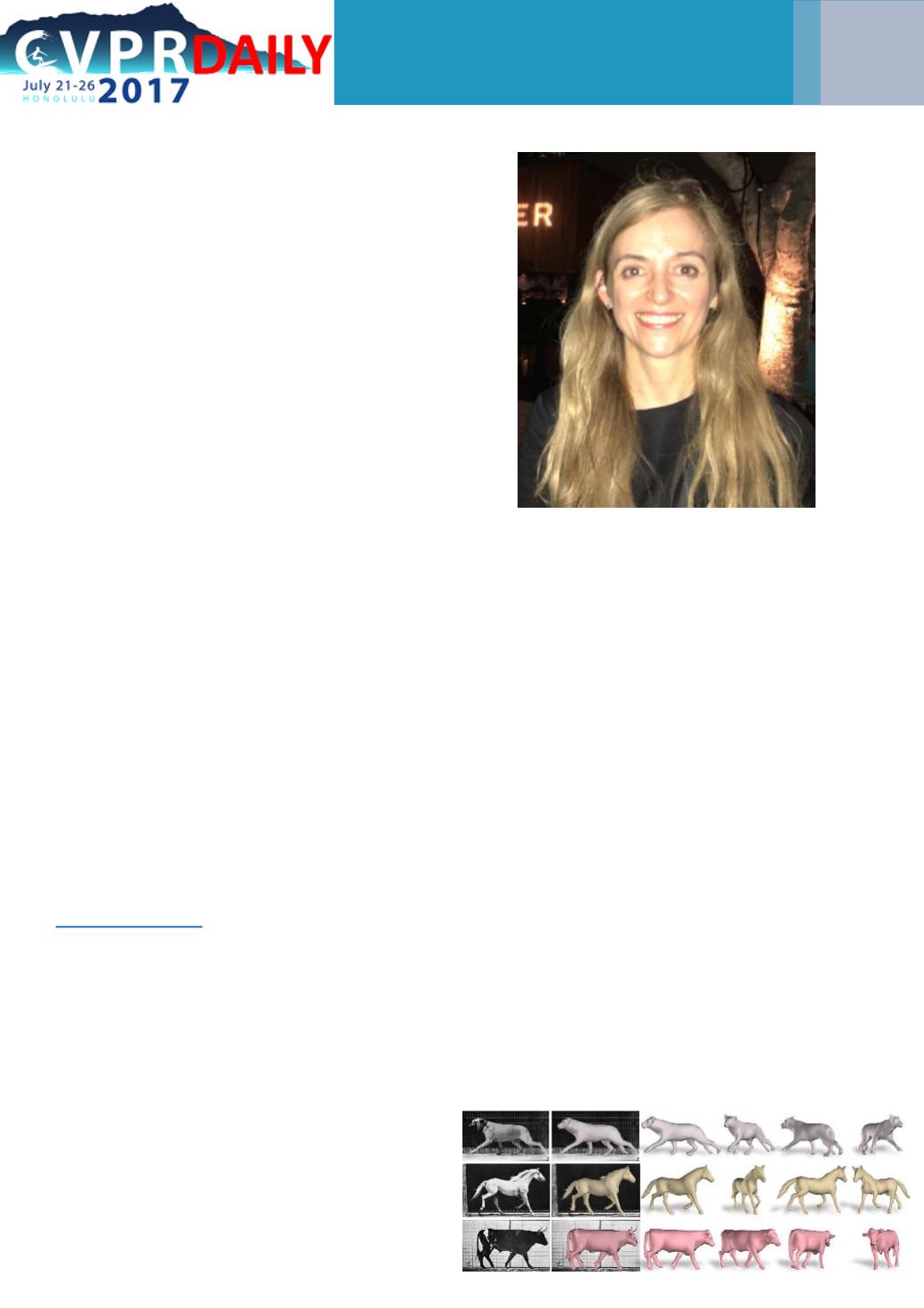

Silvia Zuffi
is a postdoctoral researcher
at the
Institute of Applied
Mathematics and Information
Technologies
in Milan, Italy. Her
current work focuses on 3D models of
animals, and her CVPR paper is a joint
work with
Angjoo Kanazawa
,
David W.
Jacobs
and
Michael J Black
.
We talked with Silvia about her current
work, and she told us that “
there are
many models of the human body, but
so far, there is none for animals
”.
However, there are many applications
in different fields where animal shape
and motion capture can be useful, like
studying animal motions in biology, or
applications in entertainment.
The main difficulty that has prevented
the development of 3D animal models
so far is the data acquisition. You
cannot simply follow the same pipeline
as you would do for creating 3D scans
of humans. There, data acquisition can
be done by inviting people to your
research lab, asking them to stand still
in a specific pose, and then making a
3D scan of their body - but you cannot
ask the same thing of a tiger.
To efficiently overcome this problem,
Michael Blackcame up with the idea
of scanning toys instead of real
animals. The advantage is that they do
not move and you can easily scan
them, but this also means that they
might not be in the pose which you
want to model, because you cannot
scan thousands of toys in all possible
shapes. For training the model, you
need to put all the 3D scans in vertex-
to-vertex correspondence, which is
called “registration”. This is easy to do
for humans, if you have many scans of
the same pose. Toys are all in different
poses, however. To make the 3D models
useful
for visual
and graphical
applications, Silvia and her co-authors
propose a method which allows them
to align the scans of animals with
different shapes and poses.
One topic of future research that Silvia
sees is to tackle the problem of
learning how the animal body deforms
with changes of pose. This cannot be
learned well with toys since they are
static, so it remains an open question
of how to get scans of moving animals,
to get pose-dependent deformation -
without having to bring wild animals
into a lab. She concluded our interview
with the words: “
It was great to build
the model. Now we want to extend it
to a lot more type of animals
”.
If you want to learn more about
Silvia’s work, go to her spotlight
presentation today at 08:54 in the
Kalākaua Ballroom.
TuesdaySilvia Zuffi
25
3D Menagerie: Modeling the 3D Shape and Pose of Animals
















